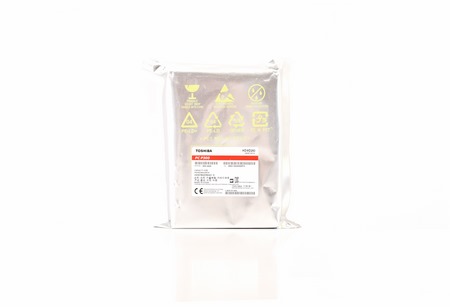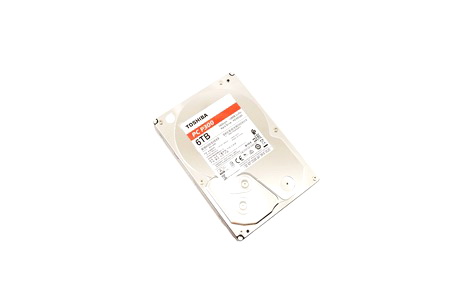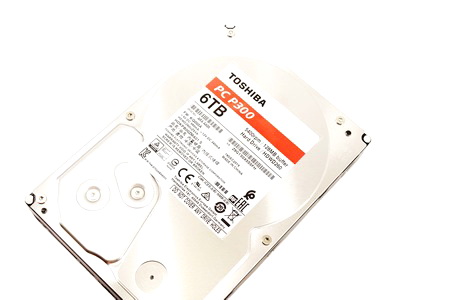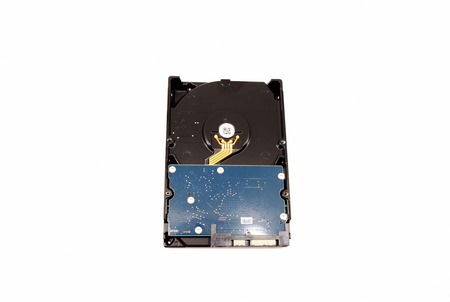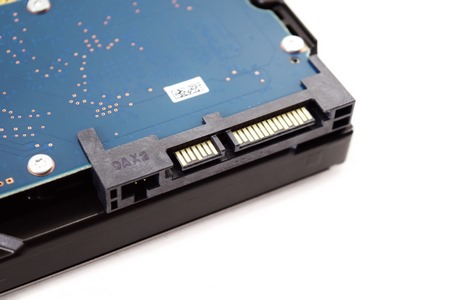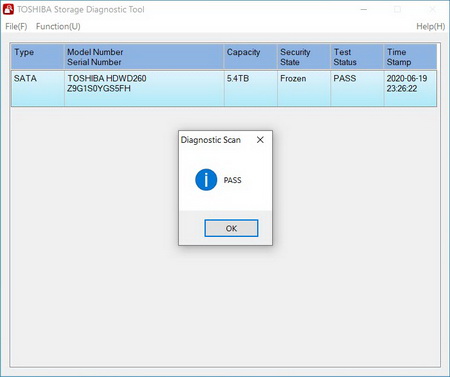INTRODUCTION
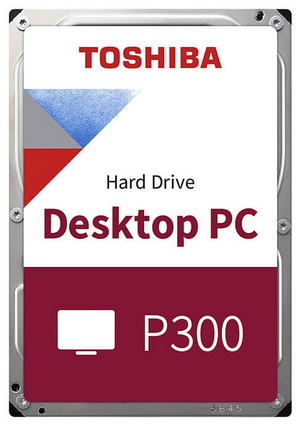
With 18/20TB hard disk drives already being sampled by manufacturers 22TB models are naturally not that far behind so if projections are correct, we should see even 24TB models by the end of 2021. Still even though very high capacities are certainly very convenient to have it's important to remember what most consumers are looking for out there, and that's affordable models at much lower capacities. Now as many of you are already aware conventional HDDs have been using perpendicular magnetic recording (PMR) or conventional magnetic recording (CMR) for many years now but due to physical limitations manufacturers turned towards shingled magnetic recording (SMR) for some of their models since it clearly offers improved areal density (and thus available capacity). The P300 line of HDDs by Toshiba is based both on the PMR/CMR and SMR technologies and today I’ll be testing the tri-platter 6TB model (HDWD260).
Toshiba Electronics Europe GmbH (TEE) is the European electronic components business of Toshiba Electronic Devices and Storage Corporation. TEE offers European consumers and businesses a wide variety of innovative hard disk drive (HDD) products plus semiconductor solutions for automotive, industrial, IoT, motion control, telecoms, networking, consumer and white goods applications. The company’s broad portfolio encompasses integrated wireless ICs, power semiconductors, microcontrollers, optical semiconductors, ASSPs and discrete devices ranging from diodes to logic ICs. TEE has headquarters in Düsseldorf, Germany, with branch offices in Germany, France, Italy, Spain, Sweden and the United Kingdom providing sales, marketing, and engineering. Company president is Mr. Tomoaki Kumagai.
The P300 line of 3.5" hard disk drives by Toshiba is currently available in 500GB/1TB/2TB/3TB/4TB/6TB capacities and as mentioned earlier uses both PMR/CMR and SMR technologies. To be more precise even though the 500GB/1TB/2TB/3TB models are based on the PMR/CMR technology and feature a rotational speed of 7200RPM (along with a 64MB buffer) the 4/6TB models are based on the SMR technology and their platters rotate at 5400RPM (buffer is set at 128MB). Of course, all models also come ready with features like NCQ (native command queuing), ramp loading technology (improves reliability), internal shock sensors and dual stage actuators (offer increased performance, data integrity and overall drive reliability - this actually only applies for the 2/3/4/6TB models). Finally, Toshiba reports an MTTF (mean time to failure) of 300.000 hours for the 500GB/1TB/2TB/3TB, 600.000 hours for the 4/6TB models and covers the entire P300 line with a 2 year limited warranty.
SPECIFICATIONS AND FEATURES

THE P300 6TB
It's been a while since I’ve received a bulk version of a Toshiba drive but the P300 6TB is exactly that so it arrived inside a static-free bag.
In terms of design the body of the P300 is similar to what we've seen by Toshiba to date from both their X300 and N300 models.
As always, the large sticker on top of the drive lists the drive's capacity, rotational speed, buffer, installed firmware, electrical requirements, revision number, factory rollout date, country of manufacture, serial number, part number, barcodes and several certifications.
Typically, all of the modules are placed on the other side of the PCB for increased protection.
At the rear end of the drive we find the standard SATA power and data connectors right next to 2 pins (probably used for service purposes).
Toshiba also has a diagnostic tool available with which you can check the status of the P300 drive.
TEST BED
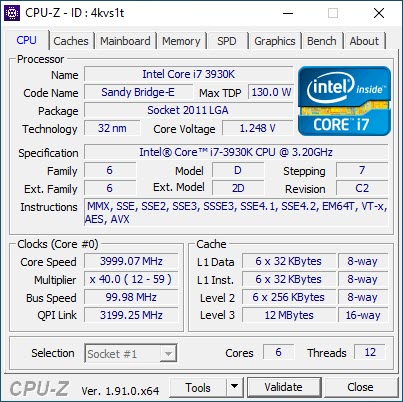

TESTING METHODOLOGY
Thoroughly testing hard disk drives may require time and patience but that's just about it. Of course, that doesn't mean that one must take it lightly, at least not when people base their decision on your results. True some choose to only use 2 or 3 benchmarking suits in order to measure the performance of a drive or drives since quite honestly most benchmarking suites do tend to agree with each other (so it's not really wrong) but we always like to take things a step further not because we have to but because we want to be almost 100% certain of the results we get and post in our charts.
So, in this kind of reviews we will use a total of 7 different benchmarking suites in an effort to bring you the most accurate results across the board. Now the only reason why i say effort is because real-world usage is not always on par with what results one gets by running several benchmarks on a drive and that's mainly because there are many variables at work from ambient temperatures to hardware configurations and even firmware versions. The benchmarking applications we use are the AIDA64 suite (former Everest Pro), HD Tune Professional (as of October 2016 we also record seek times of 3.5” drives), HD Tach RW, ATTO, Sisoftware Sandra Pro, Crystal Disk Mark 64bit and the PCMARK 7 (secondary storage suite). These benchmarking tools are the best in what they do and as you will also see later on their results more or less agree. Each test is performed a total of 6 times and then the average is recorded into the charts. Temperatures are recorded using Hard Disk Sentinel and after 45 minutes of continuous testing in a 23 degrees Celsius temperature controlled room. Finally, we also use an ExTech HD600 dBA meter on each of the drives (5cm away) in order to accurately record their noise levels (during access), although if you don't turn off all system fans when doing so it's quite possible that you will never even hear the drive. The operating system used is a fresh installation of Microsoft Windows 10 Pro with every update installed up until the time of our tests.
TEST RESULTS - AIDA64 / ATTO


TEST RESULTS - HD TACH RW / HD TUNE PRO


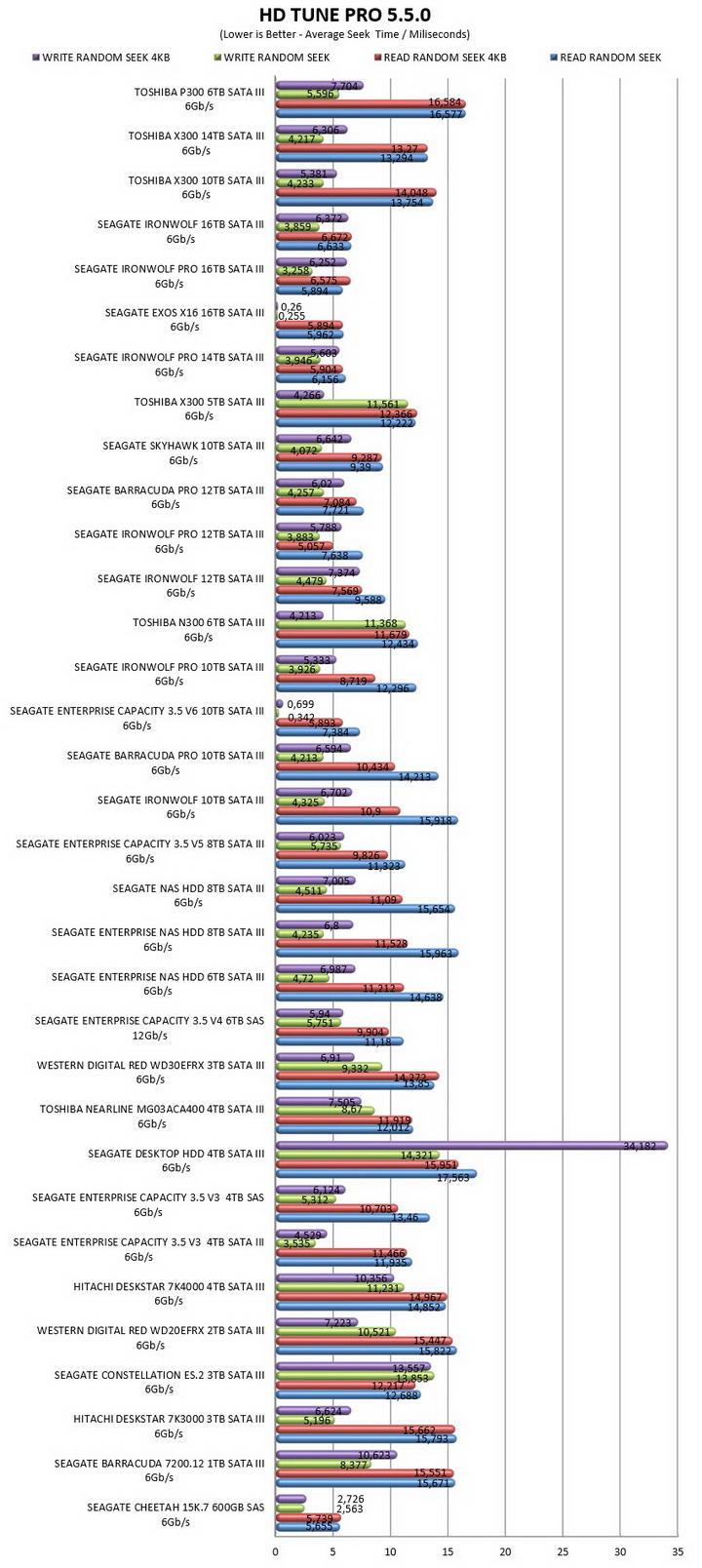
TEST RESULTS - SISOFTWARE SANDRA PRO / CRYSTAL DISK MARK X64
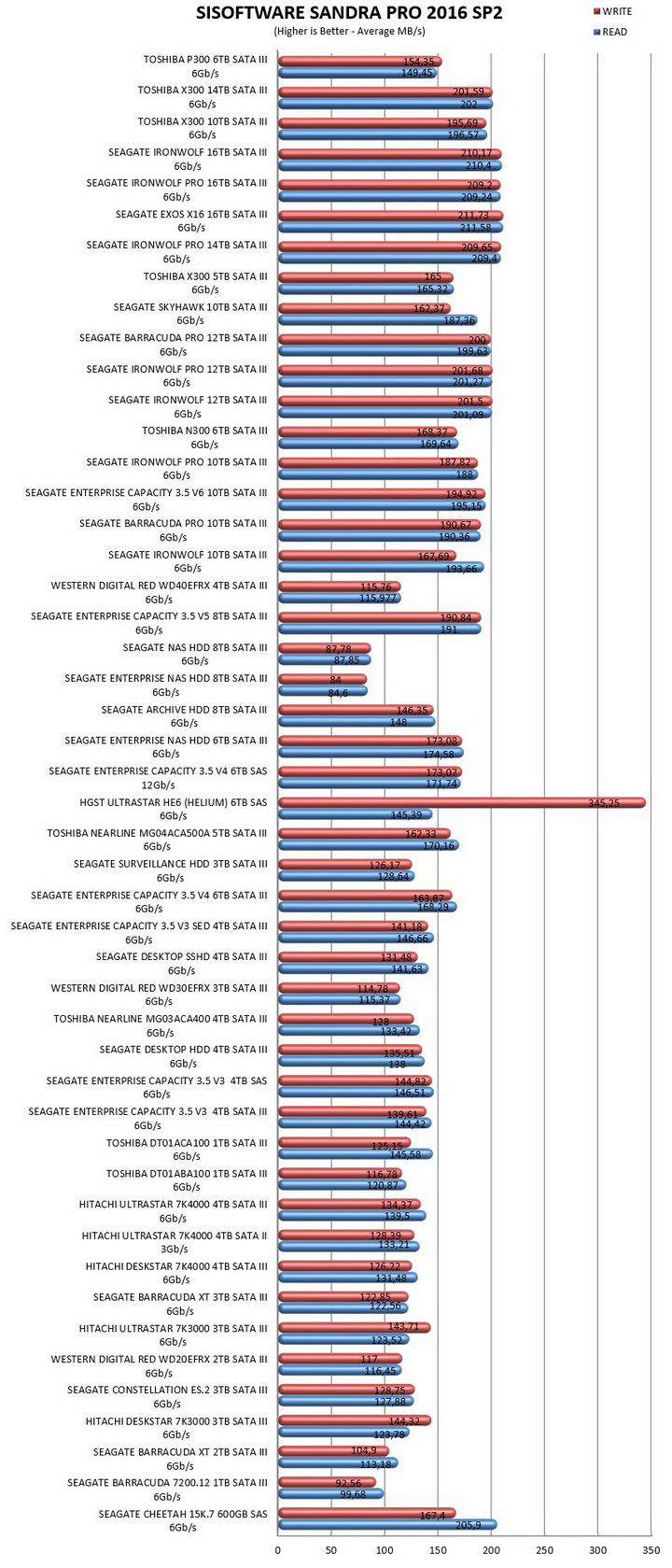

TEST RESULTS – PCMARK 7 PRO / TEMPERATURES / NOISE LEVELS
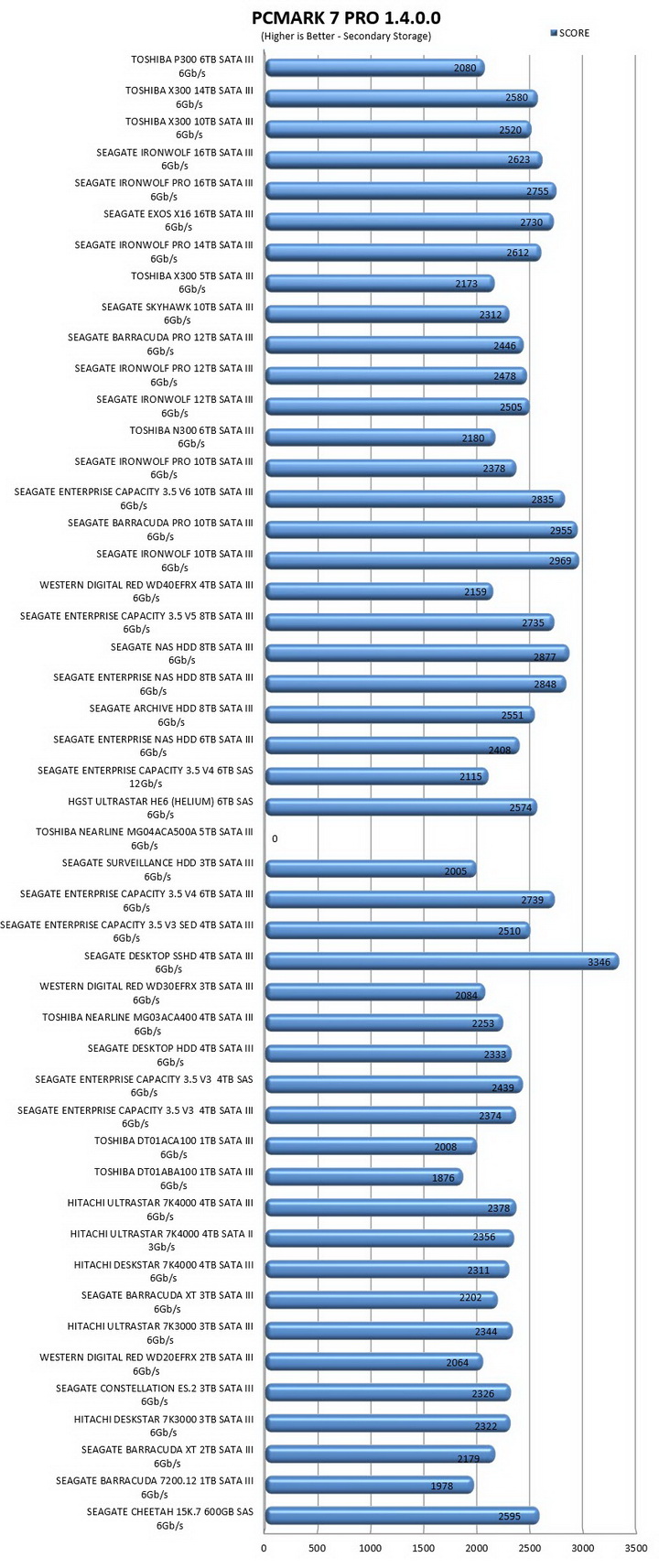


CONCLUSION
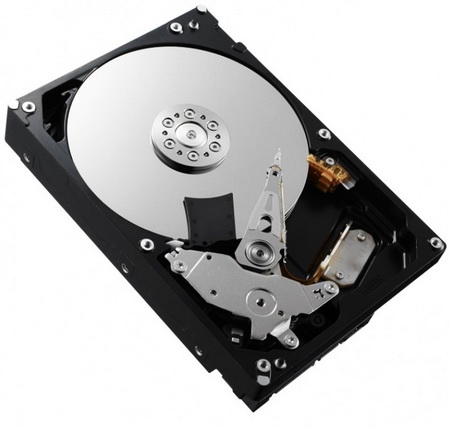
Prior to Toshiba sending over their P300 6TB drive I had read quite a few “negative” articles about the new SMR drives (WD also makes SMR drives - i think Seagate too although i didn't look into that) from some of my colleagues so i honestly didn’t know exactly what to expect. Well, as you can all see clearly from the charts SMR indeed doesn’t offer the same performance levels as PMR/CMR (primarily when it comes to continuous writes) but both for backup purposes and even as a Windows or even a Client drive (any usage that doesn’t require continuous writes) the P300 6TB drive should “behave” properly. Still it is what it is and so there’s no denying that SMR based drives are clearly not nearly as fast as their PMR/CMR counterparts so if you need the fastest performance from an HDD to cover your needs and you care not about cost then the P300 line was clearly not made for you (in that case you really should check our X300 reviews).
Due to severe availability issues inside the EU (probably because of the recent Covid19 outbreak) the P300 6TB SATA III HDD by Toshiba currently retails for 179.50Euros (Amazon.de), a price tag which is set even higher than that of the X300 6TB model. All things considered the P300 6TB hard disk drive really has the potential to be a great backup and/or client drive, still because of its current availability and price the X300 6TB model is clearly a much better overall choice.
PROS
- Build Quality (MTTF of 600.000 Hours)
- Overall Performance
- Features (RV Sensor / Internal Shock Detection / Error Recovery / Heat Prevention)
- Low Temperatures & Noise Levels
- 2 Year Limited Warranty
CONS
- Only Up To 6TB
- Continuous Write Performance
- Current Availability & Price

 O-Sense
O-Sense





